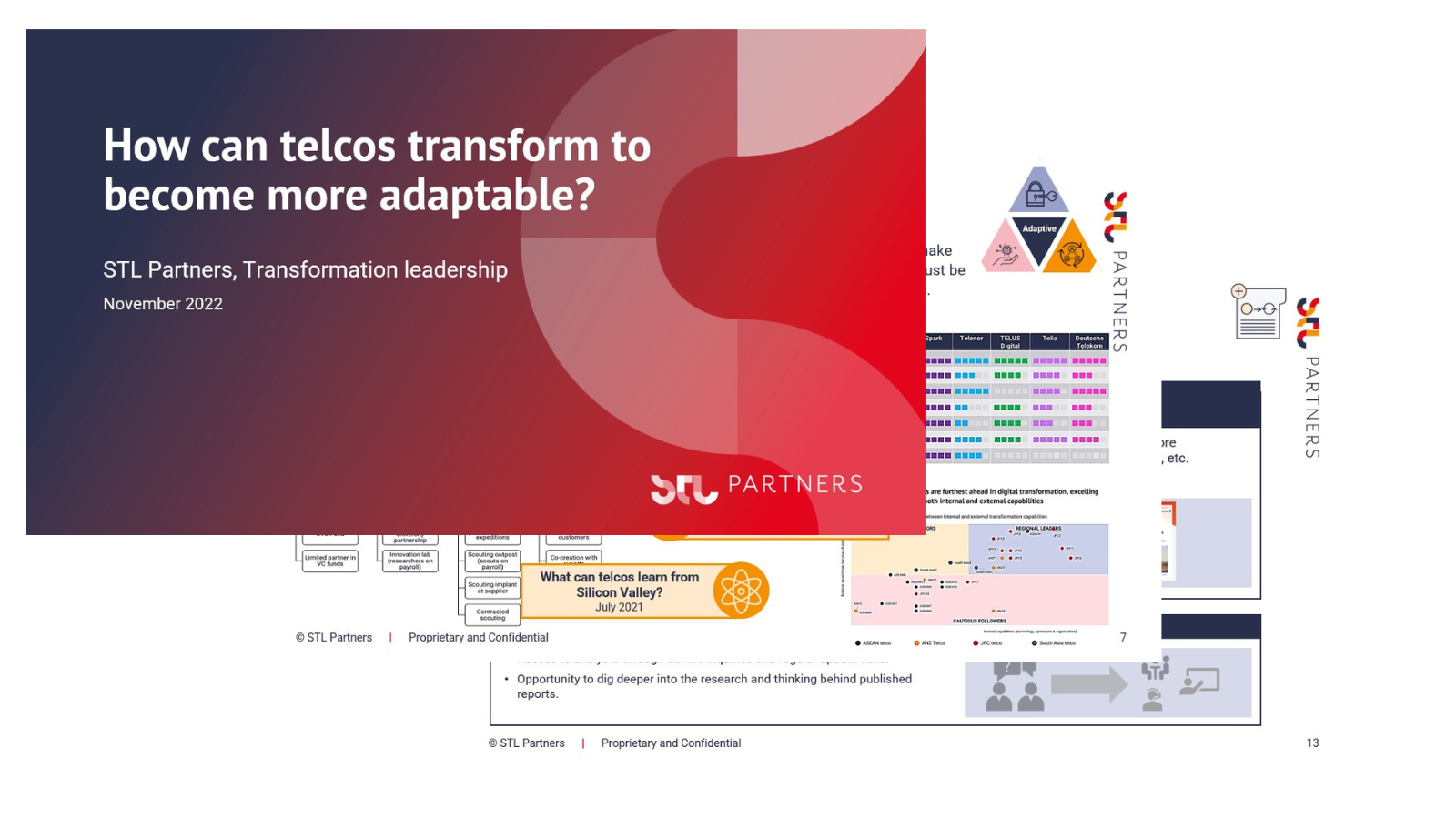
Core-as-a-Service since 2018: Wgtwo
Core-as-a-Service is not a brand new concept. Working Group Two, aka wgtwo – a smaller Scandinavian outfit, has been offering Core-as-a Service since 2018. We spoke to their CEO Erlend Prestgard about why wgtwo’s original mission to help telcos extract more value from connectivity remains as relevant in 2022.
In November 2022, Nokia announced that it would launch its core Software-as-a-Service in the first half of 2023, which would give telcos the option to consume its full suite of core solutions on a subscription basis[1]. The announcement was hailed as a “market first” and a “pioneering” move, but it was neither.
Wgtwo has been offering Core-as-a Service since 2018. Its founding mission was (and remains) to create a programmable, multi-tenant, multi-G, mobile core platform that telcos can lease on a per SIM basis. Its core network functions are hosted on AWS, in the same way that Nokia’s core SaaS will run solely on hyperscale clouds (AWS, Google Cloud and Microsoft Azure)[2].
Wgtwo emerged from an internal team at Telenor (more on this below) and a later collaboration with Cisco. Both companies (indirectly through a fund called Digital Alpha in the case of Cisco) remain joint shareholders of wgtwo, with just under 50% of the equity each. Employees and other individuals own the remaining shares. At August 2022, there were 72 staff, 80% of them software engineers.
Wgtwo is no Nokia in terms of the size of its client portfolio. Nor is its mission to revolutionise the telco industry from top to bottom all on its own. Its ambition is to run a viable company that offers telcos an alternative to running increasingly complex, multi-purpose cores on their own (built and operated) infrastructure. By becoming tenants on wgtwo’s mobile core platform, according to wgtwo, telcos can:
- Create on-demand, adjacent cores to support use cases such as IoT and B2B services, whilst maintaining their own in-house core dedicated to mass-market consumer and enterprise connectivity and services
- Do a full core swap whereby their core network is replaced with wgtwo’s platform entirely
- MVNO/Es can use the platform as an alternative to, or to diminish their reliance on, host network(s)
- Deliver cores for private networks.
Wgtwo’s core platform (Figure 1) is designed to interoperate with any mobile RAN and any BSS/OSS/CRM systems, and it can work alongside cores used by other tenants on the platform (other Gs, other use cases and other geographies). In other words, it speaks “telco” and can interoperate with other, legacy telecoms systems even though internally it is built cloud-natively using a modern software protocol (gRPC).
[1] https://www.nokia.com/about-us/news/releases/2022/11/09/nokia-launches-core-software-as-a-service-for-5g-expanding-its-saas-offerings-reach/
[2] https://www.lightreading.com/service-provider-cloud/nokia-opens-up-about-its-software-subscription-business/d/d-id/781860
Figure 1: wgtwo’s core platform

A programmable mobile core open to developers
In the words of its CEO, Erlend Prestgard, the concept for wgtwo came in 2017 when an internal team at Telenor was trying to develop and commercialise simple end products for small use cases (for 100,000s of users, not tens of millions), i.e. applications such as SMS on the web and web-based softphones.These products were designed to run on core networks and the team encountered three main challenges, which remain current today:
- Core networks are closed systems and getting access to them is difficult
- Once access is granted, the absence of API on an operator’s mobile core means that the application needs substantial adaptation in order to work
- And it will need rewriting before it can work on another operator’s core network because core networks are in essence snowflakes, i.e. unique and proprietary to each operator.
This lack of economies of scale means that there is no business value for developers to create end-user applications to run on existing mobile core networks as currently architected. [Initiatives such as the open-source CAMARA project were created to address this lack of uniformity between networks.]
Since mobile operators do not have the resources to do this development work internally (and, some might argue, neither are they interested in doing so as they steadfastly pursue the race for the next G), potential value is lost by not fulfilling demand for a large number of smaller use cases which, taken collectively, could add growth to operators’ otherwise stagnant top-line.
In that sense, Erlend Prestgard’s view is that, historically, operators have failed to extract the full value of their core networks, and the telecoms industry as a whole has failed to deliver true innovation to the market because the cost of innovation is simply too high.
So the mission of wgtwo’s founding team was (in Erlend Prestgard’s words):

Smaller-scale, high-complexity use cases are best suited for wgtwo’s platform
Wgtwo’s list of clients, existing and potential, falls into three categories: MVNOs/Es, private networks for enterprises, and MNOs.
MVNO/Es first and private networks next
Telenor Sweden’s vimla! brand – a full MVNO – was and remains wgtwo’s anchor customer. It was later joined by Norwegian MVNE eRate, specialising in B2B and B2C use cases, including IoT and M2M. In December 2021, CKH IOD (from the Hutchinson Group, based in Hong Kong) entered into an agreement to move its MVNO business onto wgtwo’s platform[3].
As of August 2022, wgtwo was live in four public networks, in Austria, Norway, Sweden and the UK. This, as yet small, customer list demonstrates the ability of the platform to successfully interoperate with the tenants’ other systems and carry live traffic for complex use cases and a wide array of clients, devices and services in demanding markets.
The company is also active in the private networks space where it was still at the lab-testing stage at the time of our interview, but planning on moving into production by the end of 2022. Erlend’s 2023 ambition is for his team to be able to deploy a new private network at the click of a button.
[3] https://www.wgtwo.com/ckh-iod-selects-working-group-two-for-public-cloud-core-network/
There are no MNOs as yet connected to the platform but the target list is clearly identified.
Adjacent cores for large MNOs
Wgtwo has established that there is no point talking to Tier-1 operators and larger MNOs about a full swap of their main core(s), and so things will remain for the next three to five years.
Technically, the benefits of the platform diminish with increasing scale (the model of lower upfront costs versus ongoing usage charges is better suited for smaller-scale operators) and decreasing complexity (one large simple use case such as consumer connectivity remains better served by a centralised core).
More generally, large operators have the structure (financial, technical and organisational) to continue running their core networks internally. They also view this activity as part of their core competencies, their raison d’être even. In addition, a pre-requisite to swapping their main core for a Core-as-a-Service platform (wgtwo’s or, for that matter, Nokia’s) would be for MNOs to have the confidence that hyperscale clouds can deliver telco-grade capabilities in the virtualisation layer. We know this not to be the case for most operators yet (see our article Hyperscaler and telco migration to the public cloud: Opportunities and risks).
But even if wgtwo’s platform does not make sense as a full core swap, it may work as an adjacent network: an innovation core on the side. So the conversation with large MNOs can be (Erlend Prestgard again):

Main core swap for specific MNOs
Then, there are specific MNOs for which wgtwo’s platform provides an attractive alternative to owning and running their own core. The attraction is primarily financial[4], rather than, for instance, the flexibility or ability to innovate that the platform also brings:
- Greenfield operators: There are not many of them, but they are genuinely interested in Core as-a-Service. They’re starting from scratch; they usually want to consume everything as a service; and they have no technical team.
- Sub-scale operators, which comprise all the regional, small-country and island operators (low hundreds of companies in total with many in the US). Customer bases are small (under one million) or very small (a few thousands or tens of thousands), and investing in a new core (e.g. 5G) is a substantial outlay with a long depreciation period. Like the greenfields, their internal skills and teams are limited. For all these reasons, a core on a subscription basis makes sense both financially and technically by outsourcing the competence outside the organisation.
[4] In a subsequent article, we will investigate how wgtwo’s costs compare those of solutions from traditional vendors’.
- Then, there is a final category of usually small to medium-sized operators (1–5 million subscribers) with specific pain points:
- Financial: They are the third or fourth operator in a competitive market, struggling to maintain EBITDA, and they need to rethink their existing cost structure; outsourcing their core network can be one such way
- Back-against-the wall operators: These are operators who have vendors in their networks that they may no longer use and need to remove quickly and cost-effectively; operators under increasing pressure to launch 5G but unsure how to do so; or operators stuck with end-of-life equipment that needs replacing. These situations create an ability to think differently, which offers favourable opportunities for platforms such as wgtwo’s.
When asked about the longer-term prospects of its company and of similar global mobile cores (even though, at the time of writing, it is difficult to say which other platforms would fall into that category apart from Rakuten’s Symworld and – even though not global – DISH’s greenfield, AWS-hosted core, which was recently opened to developers via a web interface). Erlend Prestgard’s vision is one of cautious optimism.
In five years’ time, he sees wgtwo’s platform serving tens to low hundreds of operators which equates to a market share globally of around 2–5%. This includes serving 10–20 full MNOs for their adjacent cores and having a leading position in terms of mobile core networks for MVNOs, IoT and other B2B use cases. And importantly, and perhaps most optimistically, he predicts the emergence of tens to low hundreds of APIs in the ecosystems (not just built on wgtwo’s platform but on the other similar global mobile cores, open and programmable) to address the myriad of small use cases left unfulfilled by traditional telco offerings. If this was to pass, then wgtwo would have helped nudge the industry in the right direction.
Network APIs: Unlocking new value in the telco cloud
Network APIs may offer an answer to the question of how to monetise recent and upcoming telco cloud deployments. Virtualised networks upgrade APIs and enhance the value they offer to developers and customers. To unlock their potential, telcos should focus on optimising their commercial models.
Progress in telco cloud: How do we measure agility?
In the January 2023 update to our Telco Cloud Deployment Tracker, which was looking back at the entirety of calendar year 2022, we recorded an overall slowdown in deployments.
Network Futures overview pack
Our Network Futures Service provides a roadmap for new network ownership, regulation and partnership models, and insights. into new technologies, industry dynamics and new players.



